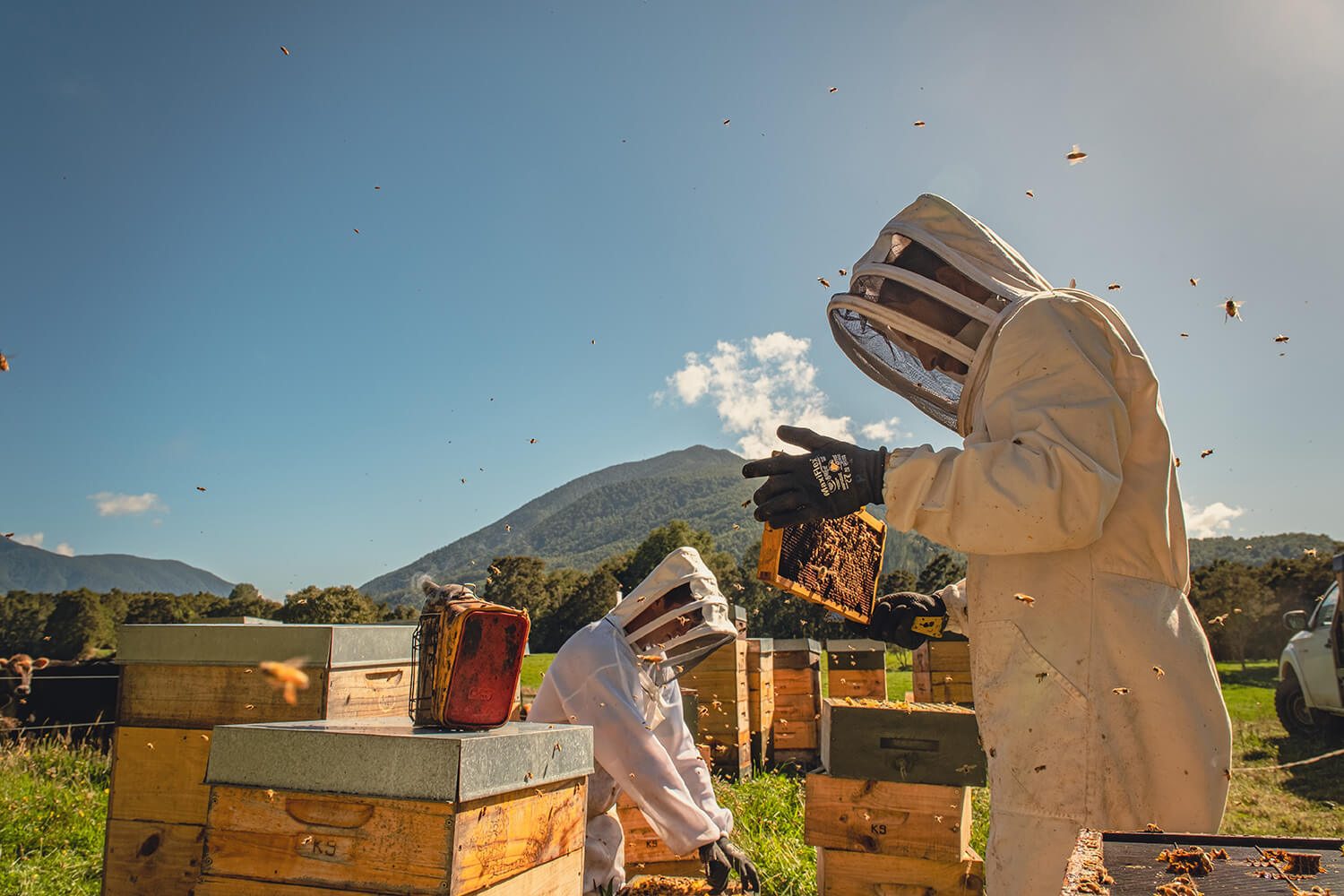The Art of Beekeeping
As we finish off the harvest, removing the last of the honey boxes and getting our bees ready to winter down, we find ourselves reflecting on the season and the art of working with bees.
Although beekeeping certainly has its scientific aspects, it really is as much an Art as it is a Science. Every hive is unique and every season brings a whole range of environmental factors that must be taken into account.

Experience plays a huge role when it comes to caring for bees, along with the intuition that only comes from years of work and being connected to what you are doing. Perhaps that’s why beekeeping is often a family business, with knowledge being passed down through generations.
This season we’ve certainly had our challenges, with less than ideal weather conditions. It’s at times like these that we really need to listen to our bees and pay attention to their needs. The health of the hive is paramount in everything we do. While we can’t control the weather, we can do everything we can to make sure our bees are happy. Right now that means getting them tucked up safe and ready for the colder conditions.
Bees don’t hibernate as such, but they do stop flying when the temperatures drop to around 10 degrees celsius. Their main purpose during the winter is to take care of their queen, so they create a cosy huddle with the queen inside. That way she stays safe and warm. Working as a team, the worker bees create extra heat by shivering. They even take turns being on colder edges of the huddle.

At this time of the year, the beekeeper’s main job is to ensure the bees have everything they need for a safe winter. As well as checking that the queen is healthy, we do meticulous checks for any diseases. Beekeepers get very attuned to tiny differences in the appearance of the brood or the architecture of the honeycomb.
There’s a bit of an art to knowing when the bees have enough food. Each hive needs enough stores to take it through the winter and allow it to rebuild the colony in spring. Reducing the entrances at this time of the year helps the bees protect themselves from wasps and other invaders.
We also rearrange the hives slightly, placing the brood frames together with the honey frames at either end, and making sure that the bees can move around freely. All of these little things make a big difference to the happiness of our bees.

At the heart of successful beekeeping is collaboration — and not just with the bees. We work closely with our landowners and really appreciate it when they check in with us to see how everything is going. In a challenging season like this one, those personal relationships make such a big difference.
We feel privileged to be able to place our hives on beautiful properties where the owners really care about the environment. Locating each hive is an art form in itself, and we are lucky to have so many incredible wilderness spots to choose from.

At MVH we believe that every stage of the honey’s journey is important. That’s why we really value our team and the way they pull together through challenges, both out in the field with the hives, and at HQ with the extraction. As Nicky says, “Our dream team has truly brought its ‘A game’ this season. It is very much appreciated when they go the extra mile to get the job done.”
Everyone is invested in the health of the hives, making sure we are looking after our wee bees, and giving our customers the best service.

Beekeeping is certainly a bit of an art form, with so many variables to consider in any given season. It is also really hard work. Sir Edmund Hilary was fond of pointing out that his career as a beekeeper was the perfect preparation for his assault on Mount Everest!
We love working with our team, and our beautiful bees. And we love bringing our customers beautiful New Zealand honey. It’s Mother Nature’s very own work of art.



